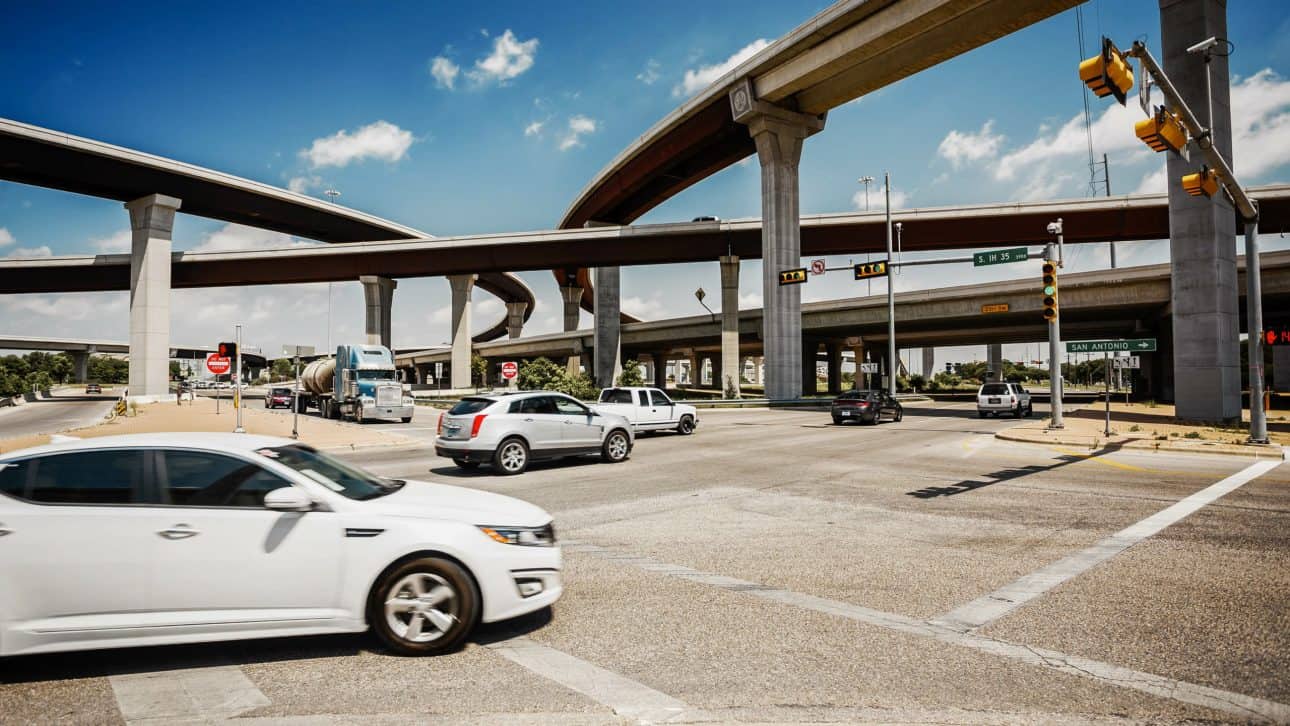New Study Reveals State-by-State Safety Benchmarks: Altitude by Geotab Presents Insights at TRB 2025
Learn about Geotab ITS’ rebrand to Altitude by Geotab and view our Digital Privacy white paper.

Comprehensive new transportation and road network funding initiatives are rolling out across the U.S., including the Safe Streets and Roads for All opportunity announced by the U.S. Department of Transportation (DOT). The discretionary program has $5 billion in funds dedicated over the next 5 years and up to $1 billion available in fiscal year 2022.
With a vision to eliminate traffic-related fatalities and serious injuries, governments and transportation authorities are recognizing the rising numbers of incidents seen in recent years on our roads. Over 40,000 road deaths were estimated in 2021 with the National Highway Traffic Safety Administration stating it was the largest annual percentage increase they’ve seen since it began its Fatality Analysis Reporting System.
Federal transportation officials are understandably concerned, and with these new funding initiatives and a redoubling of their safety efforts, they’re aiming to turn those numbers around.
The time for action is now. As U.S. Transportation Secretary Pete Buttigieg commented “We face a national crisis of fatalities and serious injuries on our roadways, and these tragedies are preventable — so as a nation we must work urgently and collaboratively to save lives.”
The new Safe Streets and Roads for All grant program is part of President Biden’s larger infrastructure package that aims to help communities take action to protect citizens on America’s roads.
The primary aim of the program is to improve roadway safety by supporting communities in developing Safety Action Plans that take into account factors like driving behavior and vehicle safety as well as speeding and road education which all play a part in overall traffic safety.
The application process is now open and while the USDOT has tried to make accessing funds as easy as possible, there are a few things to consider for communities submitting their Action Plans. Most importantly, the need for a data-driven approach.
In order for the DOT to consider a proposed Action Plan, they have set out a few criteria to consider including:
The deadline to submit an Action Plan is September 15, 2022 and communities are eager to start building plans that meet the criteria. To help get you started, the USDOT will hold webinars related to “How to Apply for SS4A Grants” beginning June 13.
Action Plans could cover a number of infrastructure, behavioral and operational safety activities like transforming roadway corridors identified on a high-injury network, or carrying out speed management strategies and creating safer routes around schools and public transit services.
Focusing on the data-driven approach criteria, safety strategies could utilize a number of ITS-related activities that incorporate transportation data and analytics in order to put forward a persuasive Action Plan.
Eligible Action Plans will need to outline not only how they intend to use transportation data to support their recommendations but also how they plan to collect measurable results for determining how effective the plan is overall.
Examples of strategies that should involve Altitude by Geotab data could include:
Using ITS data in these scenarios will provide both historical context for traffic patterns and their impact on road users, but also a path forward in developing traffic models to base new transportation strategies upon.
Community traffic planners will need to rely on a comprehensive understanding of traffic in their regions in order to address safety concerns viably and make the necessary changes that will have the most impact on reducing traffic-related fatalities and injuries.
Commitments made to the Vision Zero initiative in recent years share the same goal as the Safe Streets and Roads for All Program. With an aim to eliminate all traffic fatalities and severe injuries, Vision Zero serves as another indicator of how governments and transportation authorities are prioritizing road safety across the country.
A key component in Vision Zero success stories has been determining the role speed was playing in traffic-related fatalities and injuries. This is where ITS data is particularly useful. With analysis in hand, planners can quickly identify high crash zones and the correlating speed limits to find innovative ways to curb speeding while increasing road safety.
Altitude by Geotab recently worked with New York City and their Office of Research, Implementation & Safety in a speeding in school zone project. Gathering speed analytics, NYC was able to prioritize traffic-calming interventions in particularly high-risk corridors around school zones.
Aggregate data provided was hyper-granular into traffic flows around those school zones and allowed planners to see the before and after effects of their traffic-calming changes to judge how effective their measures were.
With contextualized traffic data, like the insights found on the Altitude platform, transportation authorities can make more informed traffic management decisions and infrastructure changes. That same level of insight can unlock many possibilities for effective road safety Action Plans and helps to shed light on why traffic-related injuries and fatalities may be occurring in the first place.
Armed with that understanding, planners can use Altitude by Geotab data to predict and model where the most effective mitigation strategies should be and can easily measure their results in near real time.
For more information on how Altitude can play a key role in developing your Action Plan or to book a demo, contact us at altitude@geotab.com or use this form to connect with one of our data experts.